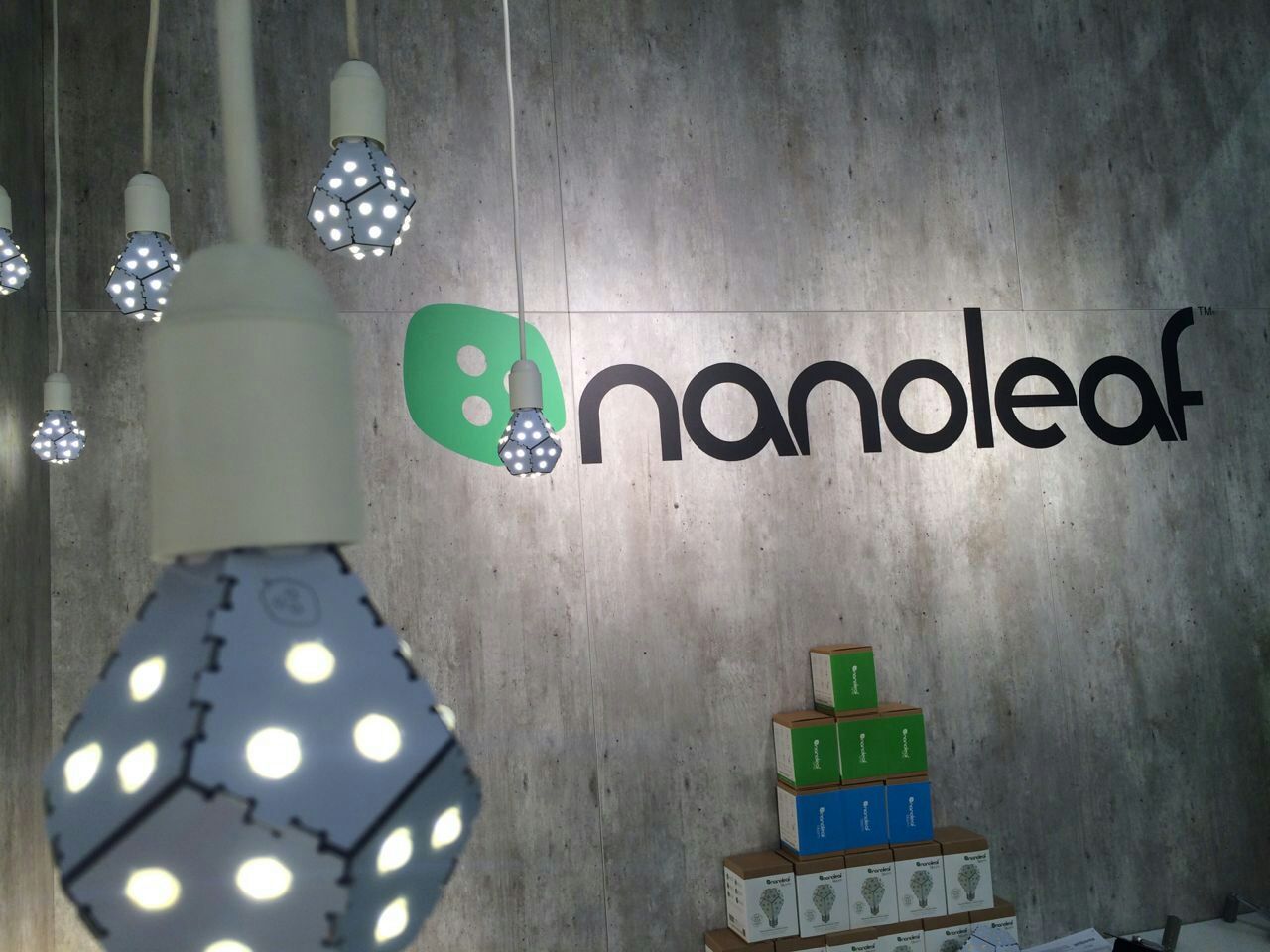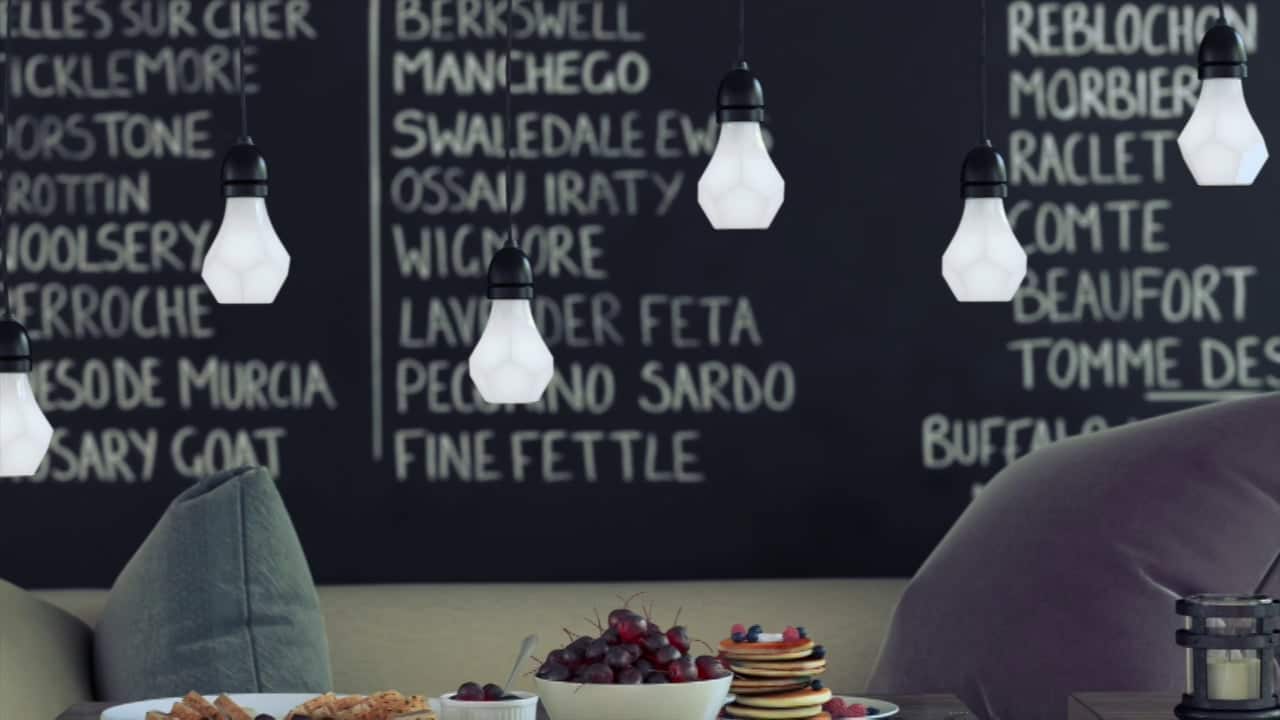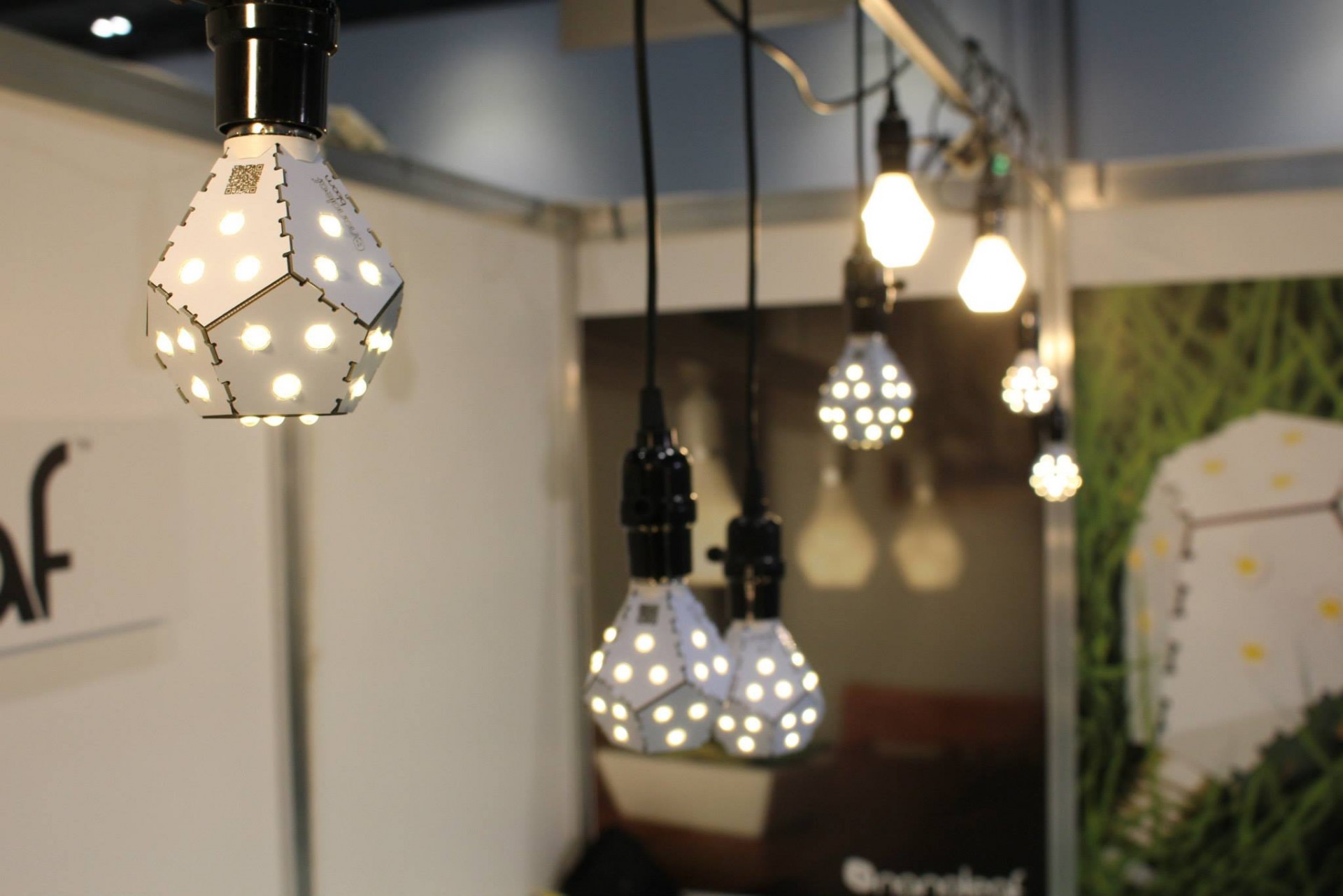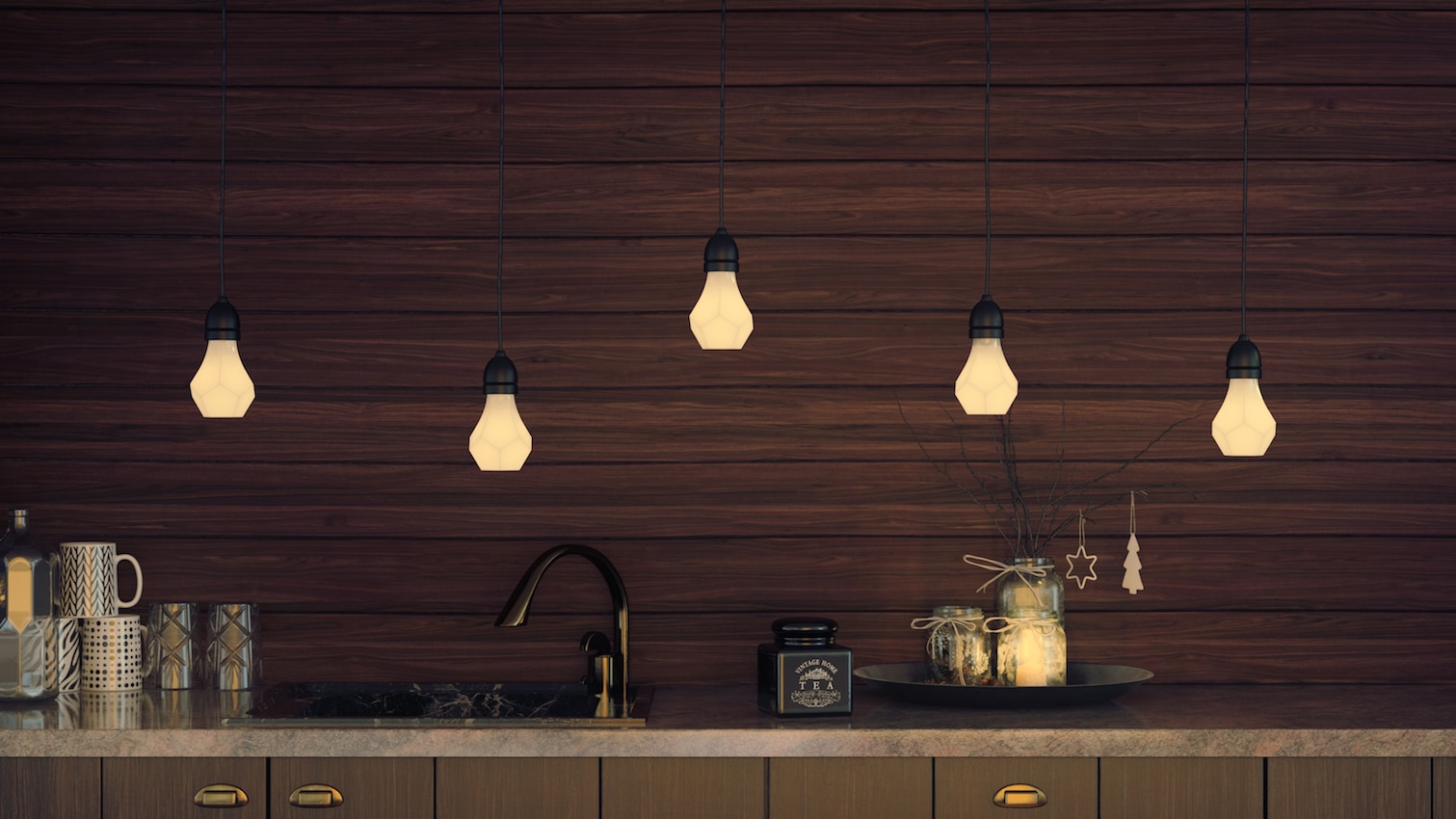Canada (Toronto)
It might seem like hyperbole, but NanoLeaf is not just Instagram gold. It’s “the most energy efficient LED lightbulb on the planet”.
While mainstream media turns against the Internet of Things, with having to get out of bed to switch off the lights being seen as the ultimate complaint of the privileged, this crosshatch between science fiction and avant-garde belies an impressive advancement in technology in its origami-like folded circuit board exterior.
Founded by a team of postgraduate students at the University of Toronto, the 10W bulbs are 87% more energy efficient than incandescent bulbs. They do this by using copper heat sinks instead of aluminium, which overheat. This is the first time the traditional heat sink has been totally eliminated. Combined with an unconventional coating that allows better heat dissipation, the bulb runs 20 degrees Farenheit cooler. The future-proof bulbs are meant to last up to 27 years when used efficiently, meaning they reduce energy prices as well as glass waste.
Although winning the SEAD Global Efficiency Award and Red Dot Design Award, it is the sustainable bulb’s dodecahedron shape and omni-directional lighting that has elevated it to eco art status. The self-dimming bulb can also be turned on/ off and changed colour by voice control or smartphone when wirelessly connected to the NanoLeaf Hub.
“Everything we do and create at Nanoleaf is a building block for what’s next. The Smarter Kit was the next big step forward, connecting light to intelligent computing platforms,” says co-founder Gimmy Chu. “Next, our team is working on technology that will make everything up until now look like the kerosene lamp by comparison.”
Chu believes the future of lighting isn’t really within bulbs. “Bulbs are based on really old incandescent technology,” he told The Blueprint. He predicts another wave of different lighting products that combines sustainability, being connected, changing colour and different forms: “Now that you can make lighting products that are couple millimetres thin, why not just make the entire ceiling an LED product?”
Project leader
Gimmy Chu, Tom Rodinger and Christian Yan, Co, co-founders
Support the Atlas
We want the Atlas of the Future media platform and our event to be available to everybody, everywhere for free – always. Fancy helping us spread stories of hope and optimism to create a better tomorrow? For those able, we'd be grateful for any donation.
- Please support the Atlas here
- Thank you!






